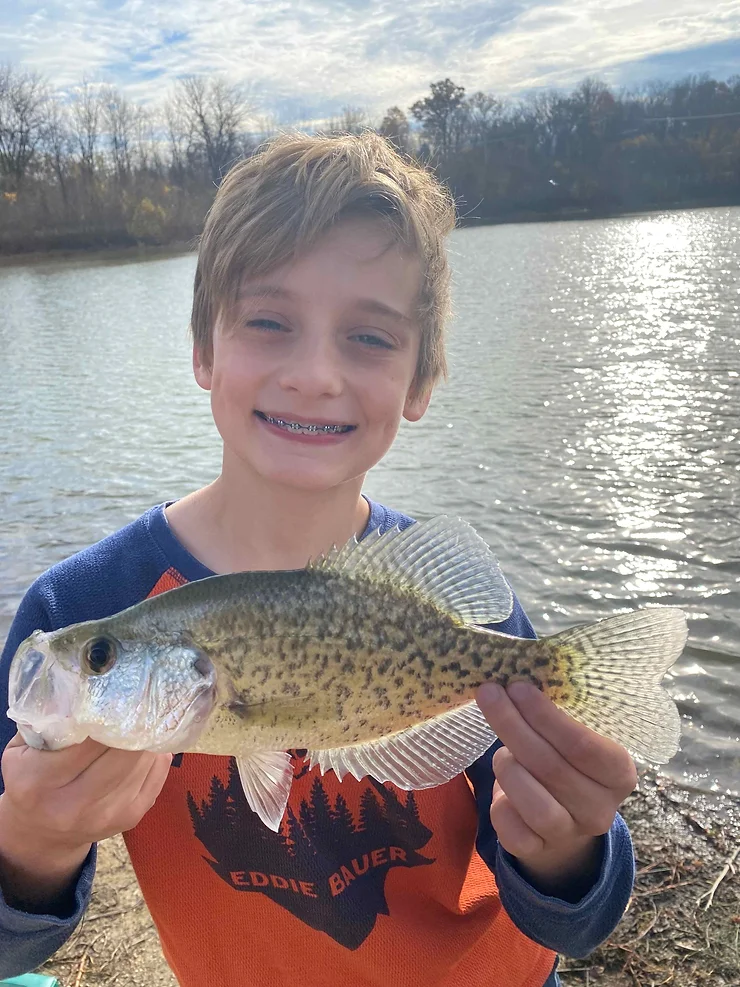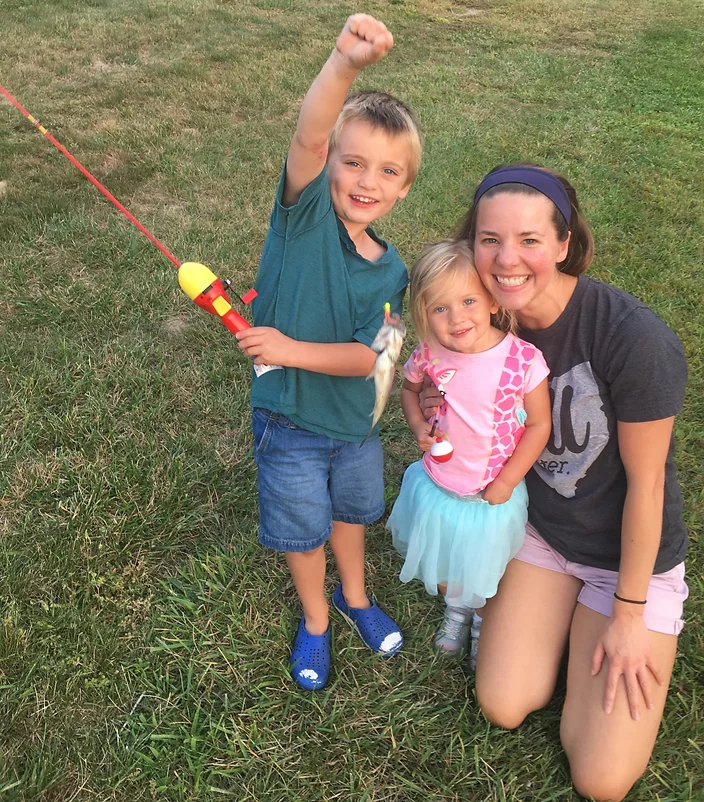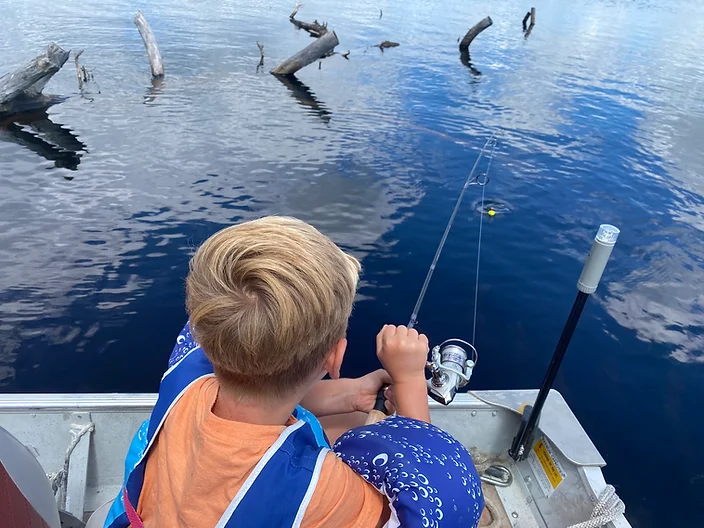How to Make Fishing Fun for Kids
Kids Fishing Gear: Best Fishing Poles for Kids
Helping Kids Improve Their Fishing Skills
Dad’s Pro Tips: Quick Reference
I love fishing with my kids. Even when a small bluegill strikes, I see pure adrenaline coursing through their veins. Their eyes widen as they struggle to fight the little panfish as if reeling in a Marlin. Dragging the fish to shore, they beam with pride. Every catch deserves a picture, no matter the size. After spending a few moments admiring their new friend, we feed him a worm and throw him back.
Teaching my kids to fish has been rewarding but not without its challenges. From untangling lines to handling hooks and the inevitable “emergency” bathroom breaks, every trip is an adventure. I’ve taught all three of my kids to fish, each with their own personality and level of enthusiasm. Here’s what I’ve learned over the years to keep kids engaged and make every trip enjoyable.
How to Make Fishing Fun for Kids
1. Focus on Fun, Not Fishing
When introducing kids to fishing, make the experience as enjoyable as possible. For me, that often means helping them more than I fish myself—untangling lines, keeping them safe, and encouraging them to have fun.
2. Come Prepared
Preparation is key when fishing with kids, as the unexpected often happens. Here are some tips to avoid potential pitfalls:
- Bring Snacks and Drinks: Hunger can quickly turn a good day sour. Keep snacks and drinks handy to avoid meltdowns and keep everyone’s energy up.
- Bathroom Breaks Beforehand: Make sure everyone uses the bathroom before leaving. An untimely bathroom break can disrupt the outing, especially if finding a spot for girls is challenging.
- Bring extra tackle: Most times, my kids lose their bobber rig to a snag, tree, or even potentially a monster bass. Make sure you are ready to string a new setup.
3. Target Panfish for Quick Success
The best way to have fun is to catch fish quickly and easily. This is why I target panfish with my kids. Panfish (bluegill, crappie, sunfish, perch, etc) are in abundance and will strike even a bare hook. When targeting panfish, you only need basic tackle and bait. For the first few years, a simple Spincast Kids Pole with a clip-on bobber will do the trick. I always fish with worms, but bread, hot dogs or corn can work well for panfish. Kids love the thrill of a catch, and panfish make it easy to get bites fast.

4. Look for Kid-Friendly Fishing Holes
Ideal fishing spots for kids have these qualities:
- Open Space: An open area with groomed grass makes learning to cast easier. Avoid tight spaces with brush or trees, which can lead to snagged lines and frustration.
- Gradual Drop-Off: A safe, gradual drop-off allows kids to fish close to the water without the risk of falling in. Always keep safety first and use life vests if needed.
- Plenty of Fish: An abundant fishing hole keeps kids engaged and competitive. When they see their siblings catching fish, their determination to catch something grows.
- Nearby Activities: If possible, choose spots with parks, playgrounds, or other activities. Kids have short attention spans, and it helps to mix in other fun activities like catching frogs or collecting shells.
5. Keep the Kids Engaged
- Let Them Take Charge: Allow kids to cast their lines, even if it’s not perfect. Feeling in control builds confidence, and they’ll quickly improve with practice.
- Keep it Active: Encourage short, action-packed outings rather than waiting for long stretches without bites. Moving the rod or “pretending” they have a bite can keep them interested until a real one comes along.
- Celebrate Every Catch: Capture the moment by taking photos, even of the smallest fish. These little victories build their love for the sport.
Kids Fishing Gear: Best Fishing Poles for Kids
When choosing a fishing pole, consider your child’s age and skill level. Here’s a quick guide to finding the right setup.
Fishing Poles for Toddlers (Ages 3-5)
- Classic Spincast Pole: These 2-3’ rods, often featuring popular kids’ characters, are lightweight and have a push-button reel that’s easy for toddlers to use. However, they’re often cheaply made, so expect to replace them occasionally. My suggestion is to stick with the name brands Zebco and Shakespeare.
- Kid-Caster Tangle-Free Rod: With the fishing line strung through a hollow tube, this setup prevents tangling. Although it lacks the natural feel of a rod, it can reduce headaches for parents.

Poles for Elementary Kids (Ages 5-10)
I would stick to the name-brand combos: Shakespeare, Zebco, or Pflueger (Spinning Reel). You can find these at your local tackle shop or at Bass Pro.
- 4-6’ Spincast Combo: Great for kids focused on learning the basics of casting and hooking. The push-button design is easy to handle and familiar for many children.
- 4-6’ Spinning Reel Combo: If your child is ready for a more advanced setup, consider a spinning reel. While they may take a little practice, spinning reels offer greater casting control and prepare kids for more advanced fishing. I personally prefer spinning reels for kids due to the durability and smooth casting experience.

Fishing Poles for Preteens and Teens (Ages 10+)
Once kids reach double digits, they can handle various reel types: spincast, spinning, or baitcaster. I recommend a 6’ medium-light rod that allows them to try different styles and grow in their fishing skills.
What is the Best Bait and Setup When Fishing with Kids?
Keep it simple! Here’s a basic guide:
- Small Hooks: Panfish have small mouths, so use size 6 or 8 hooks for better chances.
- Bobbers:
- Slipknot Bobber: This adjustable bobber is great for controlling depth and works well for deeper fishing.
- Clip-On Bobber: Easy to attach and ideal for shallower waters, this bobber is a classic choice.
- Bait: Earthworms or red worms are best for bluegill, but crickets, mealworms, or even bread can work if needed.
Helping Kids Improve Their Fishing Skills
Fishing skills improve with consistency and a step-by-step approach. Here’s the progression I use with my kids:
- Parent casts and sets hook; child reels in.
- Parent casts; child sets hook and reels in.
- Child casts, sets hook, and reels in.
- Introduce a spinning reel.
- Child baits hook, casts, sets hook, and reels in.
- Child uses artificial bait to cast, set hook, and reel in.
- Child rigs their own pole, tying knots, untangling lines, etc.
Dad’s Pro Tips: Quick Reference
Here’s my go-to checklist for a successful fishing trip with kids:
- Bring snacks and drinks
- Make your kids go to the bathroom before leaving
- Target panfish for easy catches
- Choose a safe, accessible fishing spot with lots of fish
- Use basic gear and bait
- Plan on helping them, not fishing yourself
- Bring a net or other tools for catching critters
- Stay flexible and adjust based on their interests
- Let them reel in the fish
- Take pictures of every catch
- Build excitement and celebrate the day
By following these tips, you can create positive fishing experiences that will help kids build skills, confidence, and a love for the outdoors. Happy fishing!

0 Comments